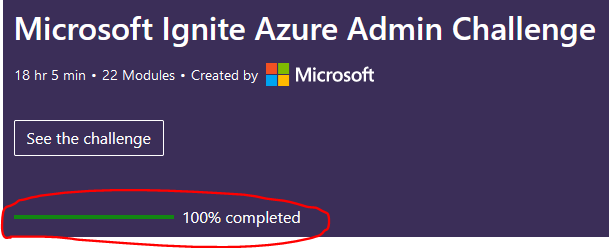Microsoft Ignite Azure Admin Challenge
Modules:
- Configure the network for your virtual machines
- Design an IP addressing schema for your Azure deployment
- Distribute your services across Azure virtual networks and integrate them by using virtual network peering
- Secure and isolate access to Azure resources by using network security groups and service endpoints
- Connect to virtual machines through the Azure portal by using Azure Bastion
- Host your domain on Azure DNS
- Manage and control traffic flow in your Azure deployment with routes
- Connect your on- premises network to Azure with VPN Gateway
- Connect your on- premises network to the Microsoft global network by using ExpressRoute
- Improve application scalability and resiliency by using Azure Load Balancer
- Troubleshoot inbound network connectivity for Azure Load Balancer
- Load balance your web service traffic with Application Gateway
- Monitor and troubleshoot your end- to- end Azure network infrastructure by using network monitoring tools
- Create an Azure Storage account
- Choose the right disk storage for your virtual machine workload
- Provide disaster recovery by replicating storage data across regions and failing over to a secondary location
- Secure your Azure Storage account
- Store and share files in your app with Azure Files
- Upload, download, and manage data with Azure Storage Explorer
- Export large amounts of data from Azure by using Azure Import/Export
- Move large amounts of data to the cloud by using Azure Data Box family
- Extend your on- premises file share capacity using Azure File Sync
Command examples:
Powershell:
#create VPN gateway
New-AzVirtualNetworkGateway -Name $GWName -ResourceGroupName $ResourceGroup `
-Location $Location -IpConfigurations $ipconf -GatewayType Vpn `
-VpnType RouteBased -EnableBgp $false -GatewaySku VpnGw1 -VpnClientProtocol "IKEv2"
Bash:
#create a resource group
az group create --name $RESOURCEGROUP --location $LOCATION
Azure CLI:
#create a subnet
az network vnet subnet create \
--address-prefixes 10.10.2.0/24 \
--name BackendSubnet \
--resource-group $RG \
--vnet-name MyVNet1

